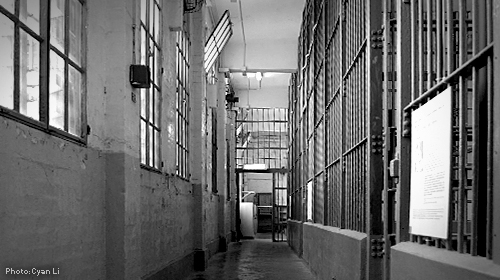
This week and next, the House and Senate will hold hearings (including today) to address the reported of between several hundred and several thousand immigration detainees from U.S. Immigration and Customs Enforcement ("ICE") custody. Although complete information about the releases is not yet available, ICE's that it had determined these individuals could be "placed on an appropriate, more cost-effective form of supervised release" raises a fundamental question, posed among others by : why were these individuals detained in the first place?
The ÀÏ°ÄĂÅ¿ª½±½á¹û firmly believes that curtailing our immigration prisons is urgently needed to improve the immigration enforcement system's respect for our nation's fundamental commitments to liberty and due process of law. Indeed, we and others have long contended that ICE is detaining thousands of individuals whose loss of liberty is not actually necessary—either because they pose no danger or flight risk, or because alternative forms of supervision are available. These alternatives serve the government's purposes at significantly less cost to taxpayers and less hardship to immigrants and their communities.
Consider the example of (a pseudonym), one of the many individuals who benefited from ICE's recent release decisions. Dolores is a domestic violence survivor seeking asylum from her native Honduras. She endured nearly two years of immigration lock-up at a facility in Minnesota. Dolores has a single criminal conviction for reentering the United States after fleeing Honduras to escape an abusive boyfriend. Although she poses no danger to the community and was an ideal candidate for supervised release, she languished in immigration detention for months on end. Behind bars, Dolores was unable to maintain contact with her three children or get the psychiatric care she desperately needed to deal with her experiences of abuse. She was deprived of sunlight (apart from the times she was brought to immigration court) and lost one-third of her hair due to anxiety. In late February, she was finally released by ICE with an ankle-monitoring bracelet and a regular reporting schedule, and she is now living in a women's shelter. In total, Dolores' detention cost taxpayers around $60,000.
Unfortunately, Dolores' story is just one of many. Over the last 15 years, detention levels have more than tripled—from 85,730 detainees in 1995 to an in FY 2011. In FY 2011, ICE held an in more than 250 immigration prison facilities nationwide. This mushrooming detention system is extremely expensive at a time of persistent fiscal crisis. Over the years, Congress has steadily appropriated more and more funds to expand immigration prisons—from to , an increase of 131 percent, with American taxpayers footing the bill. ICE typically spends approximately to detain each person in its custody, or $44,530 to $59,860 per person per year. By contrast, effective alternatives to detention cost less than $15 dollars per person per day.
Because ICE's detention budget is tethered to an inflexible mandatory bed quota, taxpayer dollars are largely wasted on locking up countless men, women, and children who do not need to be incarcerated. ICE's budget should instead encourage the use of alternatives to detention, which, as long recognized in the criminal justice context, are effective and available to meet the government's interests in preventing flight risk and ensuring public safety—at a fraction of detention's profligate costs. Reducing detention—through the use of careful risk assessment, appropriate conditions of supervision, and other measures to ensure that ICE limits detention to cases where it is necessary—is critical to fiscal responsibility and will help bring immigration detention into line with our constitutional values.
Learn more about immigration detention: Sign up for breaking news alerts,, and .





